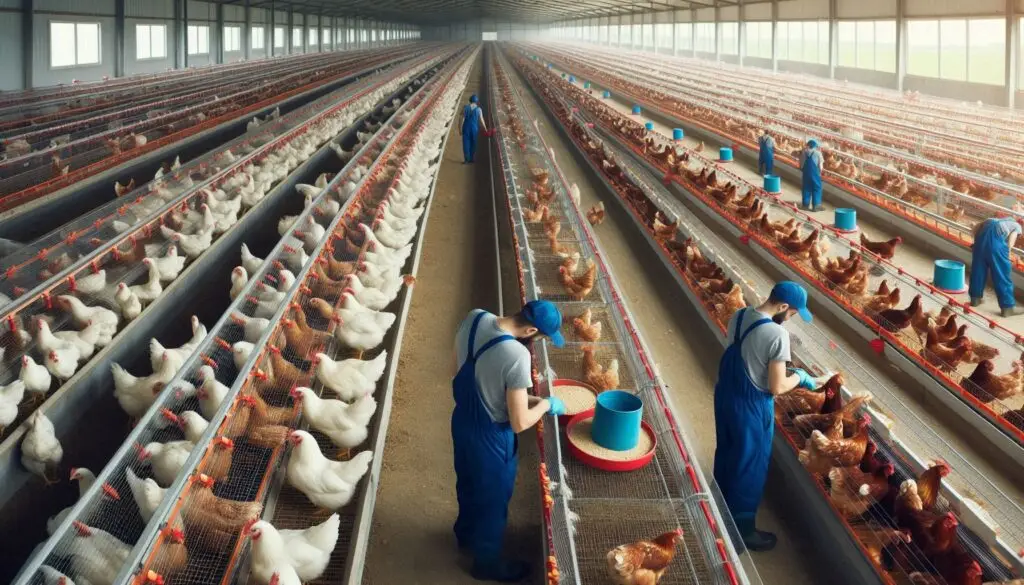Starting a Broiler Farm

Introduction
Starting a commercial broiler farm can be an excellent business opportunity. With the growing demand for poultry products, many entrepreneurs are considering entering this sector. However, several variables must be carefully considered before diving in. This guide will walk you through the essential steps to establish your broiler farm successfully.
1. Understanding the Broiler Industry
1.1 Overview of Broiler Farming
Broilers are chickens raised specifically for meat production. The broiler industry is one of the fastest-growing sectors in agriculture. The increasing demand for chicken meat makes this an attractive business venture.
1.2 Market Demand
The demand for poultry products continues to rise globally. Consumers prefer chicken due to its affordability and health benefits compared to red meat. According to industry reports, the global poultry market is expected to grow significantly in the coming years.
2. Creating a Business Plan
A well-structured business plan is crucial for any successful venture. It acts as a roadmap that outlines your goals and strategies.
2.1 Components of a Business Plan
- Executive Summary: Provide an overview of your business concept.
- Market Analysis: Research your target market and competition.
- Operational Plan: Detail how you will run your farm.
- Financial Projections: Include startup costs and revenue forecasts.
For more detailed guidance on creating a business plan, you can refer to OkCredit, which outlines the necessary steps.
3. Selecting the Right Location
Choosing the right location is one of the most critical decisions in starting a broiler farm.
3.1 Factors to Consider
- Accessibility: Ensure easy access to markets for selling your products.
- Utilities: Availability of water and electricity is essential.
- Zoning Regulations: Check local regulations regarding poultry farming.
3.2 Ideal Location Characteristics
A suitable location should be away from residential areas to minimize conflicts with neighbors and comply with local laws. Additionally, it should have good drainage and be free from flooding risks.
For more insights on location considerations, refer to ACES.
4. Procuring Equipment and Resources
Once you have selected a location, the next step is acquiring the necessary equipment.
4.1 Essential Equipment for Broiler Farming
- Broiler Houses: Constructed to provide adequate space and ventilation.
- Feeding Systems: Automated feeders can help manage feed distribution efficiently.
- Water Supply Systems: Ensure birds have constant access to clean water.
4.2 Additional Resources
You will also need bedding materials, heating systems, and waste management solutions. Proper waste disposal is crucial for maintaining hygiene on your farm.
For detailed equipment requirements, see FICSI.
5. Financial Management
Effective financial management is vital for sustaining your broiler farm.
5.1 Startup Costs
Estimate your initial investment, including land acquisition, construction costs, equipment purchases, and operational expenses such as feed and utilities.
5.2 Working Capital
Ensure you have sufficient working capital to cover expenses until you start generating revenue from sales. This includes costs like labor, utilities, and feed during the initial flock growth period.
For insights into managing finances in poultry farming, refer to Farms.com.
6. Legal Requirements
Before starting operations, familiarize yourself with the legal requirements for running a poultry farm.
6.1 Licenses and Permits
You may need various licenses depending on your location:
- Business registration
- Environmental permits
- Health and safety certifications
6.2 Compliance with Regulations
Ensure compliance with local health regulations regarding animal welfare and food safety standards.
For more details on legal requirements, check out ClearTax.
7. Choosing the Right Breed
Selecting the appropriate breed of chicken is crucial for maximizing productivity.
7.1 Popular Breeds for Broilers
Some common broiler breeds include:
- Ross 308
- Cobb 500
These breeds are known for their fast growth rates and efficient feed conversion.
7.2 Factors Influencing Breed Selection
Consider factors such as growth rate, feed efficiency, disease resistance, and market preferences when choosing your breed.
8. Managing Your Broiler Farm
Effective management practices are essential for ensuring high productivity levels.
8.1 Feeding Practices
Implement a balanced feeding program tailored to the nutritional needs of broilers at different growth stages.
8.2 Health Management
Regular health checks are vital for preventing disease outbreaks on your farm:
- Vaccinations
- Biosecurity measures
For comprehensive health management tips, refer to Alpco.
9. Marketing Your Products
Once your broilers are ready for sale, effective marketing strategies will help you reach potential customers.
9.1 Identifying Your Target Market
Determine whether you will sell directly to consumers or through wholesalers and retailers.
9.2 Marketing Strategies
Utilize social media platforms and local advertising to promote your products effectively:
- Create engaging content showcasing your farm’s practices.
- Offer promotions or discounts to attract new customers.
For more marketing strategies specific to poultry farming, see Designhill.
Conclusion
Starting a commercial broiler farm requires thorough planning and execution across various aspects of the business—from selecting an appropriate location and acquiring necessary equipment to managing finances effectively and marketing products successfully. By following these guidelines and utilizing available resources, aspiring poultry farmers can establish a thriving enterprise in this growing industry.
More from Livestock Production and Management:
https://wiseias.com/feeding-regimes-livestock/






Responses